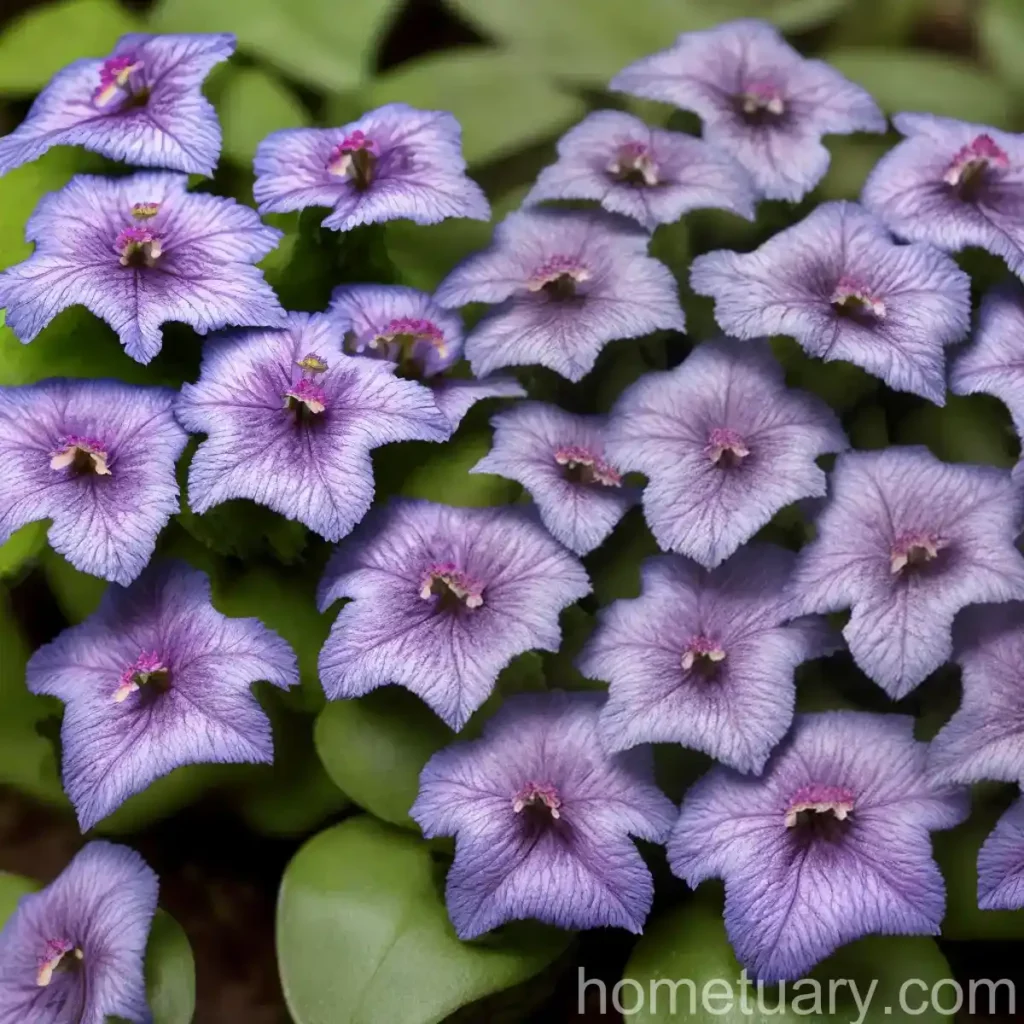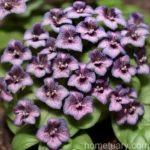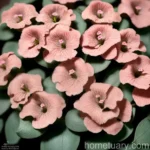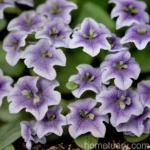Lungwort (Pulmonaria ‘Lewis Palmer’): A Comprehensive Guide for Plant Enthusiasts
Are you looking for an exquisite, low-maintenance perennial plant to enhance the beauty of your garden? Then, the lungwort (Pulmonaria ‘Lewis Palmer’) might be the perfect fit for you. This article is a comprehensive guide to understanding the Pulmonaria ‘Lewis Palmer’, commonly known as lungwort ‘Lewis Palmer’, its characteristics, cultivation, uses, and much more. Whether you are a novice gardener or an experienced horticulturist, this guide will equip you with the knowledge to cultivate and care for this stunning plant.
Introduction to Lungwort (Pulmonaria ‘Lewis Palmer’)
Lungwort, scientifically known as Pulmonaria, is a genus of flowering plants in the family Boraginaceae. Pulmonaria ‘Lewis Palmer’ is a charming cultivar appreciated for its attractive foliage and delicate flowers. Its vibrant and eye-catching leaves make it a popular choice for gardeners seeking a plant with ornamental value. This cultivar is particularly beloved for its unique spotted foliage, making it a standout addition to any garden or landscape.
Key Takeaways – Lungwort (Pulmonaria ‘Lewis Palmer’)
Before we delve into the detailed aspects of cultivating and caring for the Pulmonaria ‘Lewis Palmer’, let’s explore some essential key takeaways about this exquisite plant:
- Plant Name: Pulmonaria ‘Lewis Palmer’
- Common Name: Lungwort ‘Lewis Palmer’
- Scientific Name: Pulmonaria ‘Lewis Palmer’
- Family: Boraginaceae
- Cultivar Type: Perennial Plant
- Foliage: Spotted
- Flowering Period: Early Spring
- Water Needs: Moderate
- Sunlight: Partial Shade
- Growth Habit: Clump-forming
- Hardiness: Resistant to certain diseases
- Attracts: Wildlife and pollinators
- Uses: Ornamental, medicinal, and companion planting
In the following sections, we will explore the culture, uses, and various aspects related to the care and maintenance of lungwort ‘Lewis Palmer’. Without further ado, let’s embark on a journey into the world of this captivating perennial plant.
Culture
Understanding the cultural requirements of any plant is crucial for its successful cultivation. Lungwort ‘Lewis Palmer’ has specific needs in terms of water, sunlight, soil, and fertilization to thrive and display its full splendor.
Water
One of the most critical aspects of caring for Pulmonaria ‘Lewis Palmer’ is providing adequate moisture. These plants prefer consistently moist soil, especially during the active growing season. However, they do not thrive in waterlogged conditions, so it’s essential to ensure well-draining soil to prevent waterlogging, especially in regions with heavy rainfall.
- Watering Frequency: Aim to keep the soil consistently moist, especially during hot and dry periods.
- Signs of Overwatering: Yellowing or wilting leaves, accompanied by waterlogged soil.
- Signs of Underwatering: Drooping or curling leaves, especially in direct sunlight or high temperatures.
Sunlight
Lungwort ‘Lewis Palmer’ thrives in partially shaded areas, making it an excellent choice for gardens with dappled sunlight or partial shade. While it can tolerate some morning sun, providing it with protection from the intense afternoon sunlight is crucial for maintaining the plant’s health and vigor.
- Ideal Sun Exposure: Partial shade to full shade, especially in regions with hot summers.
- Leaf Scorch: Protect the plant from prolonged exposure to intense sunlight to prevent leaf scorch, which can damage the foliage.
- Adaptability: Lungwort ‘Lewis Palmer’ can adapt to different light conditions, making it suitable for various garden settings.
Fertilizer
Fertilization is essential for promoting healthy growth and vibrant foliage in Pulmonaria ‘Lewis Palmer’. While these plants do not have extremely high nutritional demands, providing them with a balanced and organic fertilizer can enhance their overall vigor and appearance.
- Fertilizer Type: Consider using a balanced, slow-release fertilizer formulated for flowering perennials.
- Application Time: Apply fertilizer in early spring before the active growth phase begins to support healthy foliage and flower production.
- Avoid Overfertilization: Excessive fertilization can lead to lush foliage at the expense of flowering, so moderation is key.
Soil
The right soil conditions play a pivotal role in the successful cultivation of lungwort ‘Lewis Palmer’. This plant thrives in soil with specific characteristics, and it’s essential to create an environment that mimics its native habitat.
- Soil Type: Well-draining, humus-rich soil is ideal for lungwort ‘Lewis Palmer’.
- pH Level: Slightly acidic to neutral soil pH is preferred.
- Amendment: Incorporating organic matter, such as compost or well-rotted manure, can improve soil structure and fertility.
- Mulching: Applying a layer of organic mulch around the plant can help retain soil moisture and suppress weed growth.
Pruning
Proper pruning practices are essential for maintaining the health and pleasing appearance of Pulmonaria ‘Lewis Palmer’. While lungwort is generally low-maintenance, occasional pruning can help manage its growth and promote better flowering.
- Deadheading: Remove spent flowers to encourage continuous blooming and prevent self-seeding.
- Leaf Removal: Trim back any damaged or unsightly foliage to maintain the plant’s aesthetic appeal.
- Division: Periodically dividing overcrowded clumps can rejuvenate the plant and prevent congestion.
Propagation
For gardeners interested in expanding their collection of lungwort ‘Lewis Palmer’ or sharing this beautiful plant with others, propagation through division or seed sowing offers viable methods to increase its presence in the garden.
- Division: In early spring or fall, carefully divide mature clumps to create new plants, ensuring that each division has a healthy root system.
- Seed Sowing: Collecting and sowing seeds in a controlled environment can yield new plants, although it may take longer to achieve mature specimens compared to division.
Container Popularity
Lungwort ‘Lewis Palmer’ is well-suited for container gardening, offering an opportunity to elevate outdoor spaces, patios, or balconies with its attractive foliage and early spring blooms.
- Container Type: Choose a spacious container that accommodates the plant’s root system and provides adequate drainage.
- Growing Medium: Use a high-quality, well-draining potting mix to support healthy root development.
- Placement: Select a partially shaded location for the container, ensuring that the plant receives suitable light conditions.
Now that we’ve covered the essential cultural aspects of growing and caring for lungwort ‘Lewis Palmer’, let’s delve into its diverse uses and explore the benefits and ornamental value it brings to gardens and landscapes.
Common Diseases
While the Pulmonaria ‘Lewis Palmer’ is relatively resistant to diseases, it’s essential to be mindful of potential issues that may arise to ensure the plant’s ongoing health and vitality.
- Powdery Mildew: In humid conditions, lungwort may be susceptible to powdery mildew, characterized by a white powdery growth on the leaves. Ensuring proper air circulation and avoiding overhead watering can minimize this issue.
- Crown Rot: Excessive soil moisture or poor drainage can lead to crown rot, causing the plant to wilt or show signs of decay. Maintaining well-draining soil and avoiding waterlogging is crucial to prevent this problem.
By staying vigilant and providing optimal growing conditions, gardeners can effectively minimize the risk of diseases affecting their lungwort ‘Lewis Palmer’ plants.
Disease Diagnosis
Diagnosing plant diseases can sometimes be challenging, especially for less experienced gardeners. However, being attentive to changes in the plant’s appearance and promptly addressing any abnormalities can contribute to successful disease management.
- Symptoms: Look for unusual spots, wilting, or discoloration on the leaves, as these can be indicative of underlying disease issues.
- Consulting Experts: If uncertain about a specific issue, seek guidance from local horticultural experts or plant pathologists to accurately diagnose and address any disease concerns.
- Preventive Measures: Implementing proper cultural practices and maintaining overall plant health can serve as preventive measures against common diseases.
Understanding the signs and symptoms of potential diseases can empower gardeners to take proactive measures to protect their lungwort ‘Lewis Palmer’ and other garden plants.
Common Pests
While lungwort ‘Lewis Palmer’ is generally resistant to pests, occasional encounters with certain insects may occur, requiring vigilant monitoring and suitable pest management strategies.
- Slugs and Snails: These common garden pests can occasionally feed on the foliage of lungwort, leaving behind unsightly damage. Applying eco-friendly methods, such as copper tape or natural slug repellents, can help deter these pests.
- Sawfly Larvae: The larvae of sawflies may feed on the leaves of Pulmonaria ‘Lewis Palmer’, causing visible damage. Promptly removing any affected foliage and maintaining a healthy plant environment can mitigate this pest issue.
By maintaining a healthy and balanced garden ecosystem, gardeners can reduce the likelihood of pest infestations and support the overall well-being of their lungwort ‘Lewis Palmer’ and other plants.
Botanist’s Tips
Here are some additional tips and recommendations from botanists and horticultural experts to maximize the success of cultivating and caring for lungwort ‘Lewis Palmer’:
- Companion Plants: Pair Pulmonaria ‘Lewis Palmer’ with shade-loving companions, such as hostas, ferns, and bleeding hearts, to create visually appealing and harmonious plant combinations.
- Mulching: Apply a layer of organic mulch around the base of the plant, maintaining a clear space around the stem to prevent moisture-related issues and weed encroachment.
- Wildlife Attraction: Embrace the pollinator-friendly nature of lungwort ‘Lewis Palmer’ by incorporating it into wildlife-friendly and ecological garden designs to support local biodiversity.
Applying these expert tips can contribute to a thriving and visually captivating garden featuring the Pulmonaria ‘Lewis Palmer’.
Fun Facts
To further appreciate the allure of lungwort ‘Lewis Palmer’, here are some intriguing fun facts about this charming perennial plant:
- Historical Significance: Lungwort has a rich history of medicinal uses and folklore, with references dating back centuries for its purported healing properties.
- Leaf Variegation: The distinctive spotted foliage of Pulmonaria ‘Lewis Palmer’ adds visual interest throughout the growing season, making it a captivating feature in the garden.
- Wildlife Interaction: The nectar-rich flowers of lungwort ‘Lewis Palmer’ attract various pollinators, contributing to the ecological diversity of garden spaces.
These fun facts offer a glimpse into the captivating world of Pulmonaria ‘Lewis Palmer’ and its cultural, ecological, and historical significance.
Links to External Resources
For additional information, inspiration, and resources related to Pulmonaria ‘Lewis Palmer’ and perennial gardening, consider exploring the following external links:
- Royal Horticultural Society – Pulmonaria
- Missouri Botanical Garden – Lungwort (Pulmonaria)
- Gardening Know How – Lungwort Care and Growing Conditions
These reputable sources offer valuable insights, care tips, and in-depth knowledge to support the successful cultivation and enjoyment of lungwort ‘Lewis Palmer’ in gardens and landscapes.
In conclusion, the Pulmonaria ‘Lewis Palmer’, with its spotted foliage, early spring blooms, and adaptable nature, stands as an enchanting addition to gardens, woodland settings, and container displays. By understanding and embracing its specific cultural requirements, benefits, and symbolic value, gardeners can enhance their outdoor spaces with the timeless allure of lungwort ‘Lewis Palmer’. Whether utilized as a border plant, accent feature, or wildlife-supporting element, this captivating perennial beckons enthusiasts to explore its colorful history and ecological significance, enriching garden landscapes and inspiring a deeper connection with nature.















